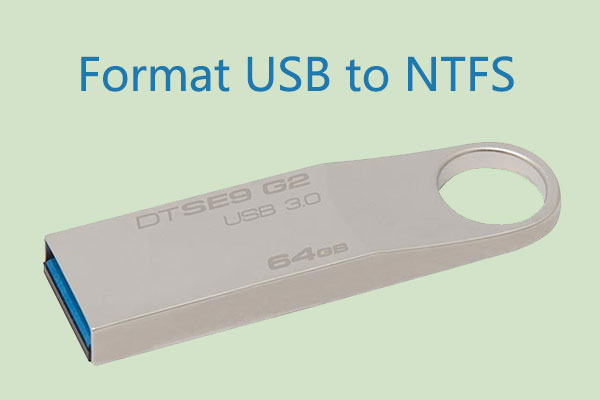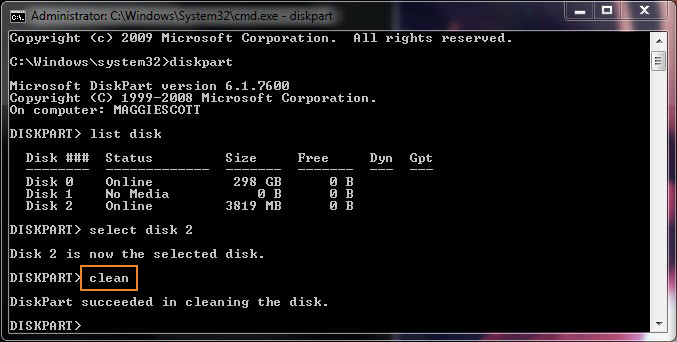Format Thumb Drive Mac Command Line
The unmountDiskcommand unmounts all volumes of the given disk drive but keeps the drive itself visible to the computer (as opposed to the eject option that disconnects it entirely) Then, run the following command to create the bootable USB: $ sudo dd if=/Users/kyle/Downloads/Linux.iso of=/dev/disk2 bs=8m. Format the partition. We’ll need to create a filesystem on our brand new partition. In this case I’ll be creating a FAT32 partition for the drive as it is intended to be used with Mac, Windows, and Linux. I’m using the dosfstools package in my Ubuntu based distro. If you don’t have it, install with sudo apt install dosfstools. To format USB drive on Mac using this method, all you need to do is plug in the USB device into your Mac and select it from the Disk Utility’s sidebar menu. Next, just select the Erase button from the top bar which will cause a menu to appear with numerous customization options. First of all, it will ask which your preferred format system is. Sudo umount /dev/sdc1. Now, Use one of the following commands as per the file system you want. To format a USB drive, most of the users prefer VFAT and NTFS file systems because they can be easily used on the Windows operating system. Format with vFat File System. Sudo mkfs.vfat /dev/sdc1.
In some cases, you may need to format a USB flash drive or hard disk using the command line. For example, this can be useful when Windows cannot complete formatting, as well as in some other situations.
This guide will detail how to format a USB flash drive or hard disk using the command line in Windows 10, 8 and Windows 7, as well as an explanation of when which methods will work best.
Note: formatting removes data from the disk. If you need to format the C drive, you will not be able to do this in the running system (since the OS is on it), but there are ways, nevertheless, which is at the end of the instruction.
Using the FORMAT command from the command line


Format is a command for formatting drives on the command line, existing since the days of DOS, but working properly in Windows 10. With it, you can format a USB flash drive or hard disk, or rather, a partition on them.
For a flash drive, it usually does not matter, provided that it is defined in the system and its letter is visible (since they usually contain only one partition), it can be for a hard disk: with this command you can format only partitions individually. For example, if the disk is divided into sections C, D and E, with the help of format you can format D first, then E, but not merge them.
The procedure will be as follows:
- Run the command prompt as administrator (see How to start the command prompt as administrator) and enter the command (an example is given for formatting a flash drive or a hard disk partition with the letter D).
- format d: / fs: fat32 / q (In this command, after fs: you can specify NTFS to format not in FAT32, but in NTFS. Also, if you do not specify the / q parameter, then not fast, but full formatting will be performed, see Fast or full formatting of the flash drive and disk).
- If you see the message 'Insert a new disk into drive D' (or with a different letter), just press Enter.
- You will also be prompted to enter a volume label (the name under which the disc will appear in the explorer), enter at your discretion.
- Upon completion of the process, you will receive a message stating that the formatting is over and the command line can be closed.
Format Thumb Drive Bootable
The procedure is simple, but somewhat limited: sometimes it is necessary not only to format the disk, but also to delete all partitions on it (that is, to merge them into one). Here format will not work.
Formatting a flash drive or disk in the command line using DISKPART
The Diskpart command line tool, available in Windows 7, 8 and Windows 10, allows you not only to format individual sections of a flash drive or disk, but also to delete them or create new ones.
Format Flash Drive Mac Command Line
First, consider using Diskpart for simple partition formatting:
Format Thumb Drive Mac Os
- Run a command prompt as administrator, type diskpart and press Enter.
- In order, use the following commands, pressing Enter after each.
- list volume (here pay attention to the volume number corresponding to the drive letter that you want to format, I have 8, you use your number in the next command).
- select volume 8
- format fs = fat32 quick (instead of fat32, you can specify ntfs, and if you need not quick, but full formatting, do not specify quick).
- exit
This completes the formatting. If you need to delete all partitions (for example, D, E, F and others, including hidden ones) from the physical disk and format it as a single partition, you can do it in a similar way. In the command line, use the commands:
- diskpart
- list disk (you will see a list of connected physical disks, you need a disk number to be formatted, I have it 5, you will have your own).
- select disk 5
- clean
- create partition primary
- format fs = fat32 quick (instead of fat32 it is possible to specify ntfs).
- exit
As a result, there will be one formatted primary partition with a file system of your choice. This can be useful, for example, when a flash drive does not work correctly due to the fact that it has several partitions (about it here: How to delete partitions on a flash drive).

Format Thumb Drive Mac Command Line Command
Command line formatting - video
How To Format Hard Drive For Mac
Finally, what to do if you need to format the C drive with the system. To do this, you will need to boot from the boot drive from the LiveCD (including utilities for working with hard disk partitions), a Windows recovery disk or an installation USB flash drive with Windows. Those. It is required that the system is not started, since it is deleted when formatting.
Reformat Thumb Drive Mac
If you booted from a bootable Windows 10, 8 or Windows 7 flash drive, you can press Shift + f10 (or Shift + Fn + F10 on some laptops) in the installation program, this will bring up a command line where C formatting will already be available. Also, the Windows Setup program when selecting the 'Full installation' mode allows you to format the hard disk in a graphical interface.